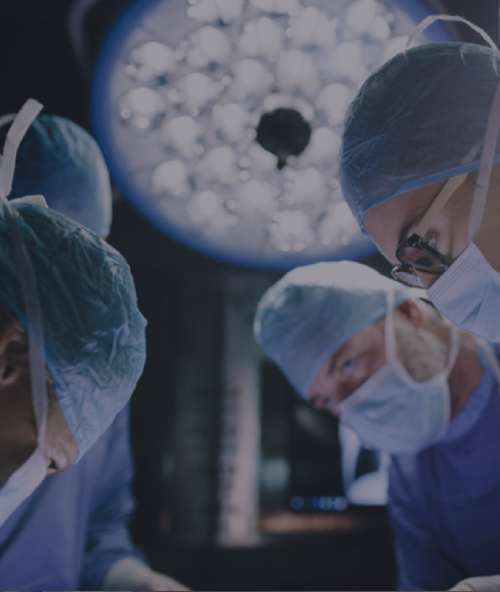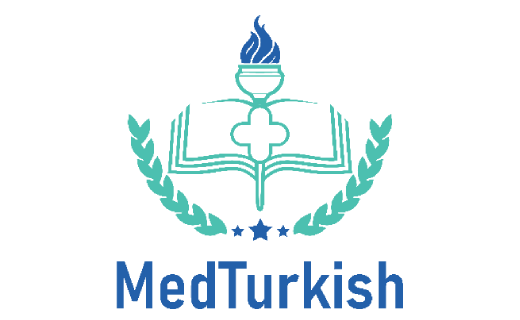
KIDNEY TRANSPLANTATION
Kidney Transplantation Centers; with its world-famous academic staff and specialist physicians, and health personal specialized on post organ transplantation patient care, provides service at international standards. In the centers, where the best results are achieved with all transplantation, from live or cadaver donors, liver transplants for children and adults are being performed with success. These departments, where the organ transplantation is handled not only with the operation process, but with the cooperation of imaging units, operation room, intensive care, and in-bed patient service rooms, are also a reference center in the world. In Turkey, as the organ donors has not reached sufficient levels, transplantation from live donor levels reach 80%. This situation enabled Turkey to take the first place among countries that can perform transplantation from live donor. Therefore, Kidney Transplantation Centers also provide service as an international education center. Each year, surgeons from Turkey’s prominent universities, and significant hospitals of the world, mostly from USA, participate in training programs organzied in Kidney Transplantation Centers.
Kidney Transplantation Centers that leads the way in many areas, and entered into global medical literature with its operations, special surgical techniques are performed with success. In kidney donor operations, the laparoscopic surgeries that is the most appropriate for the patient are performed.
THE MOST EFFICIENT TREATMENT OF CHRONIC KIDNEY FAILURE IS KIDNEY TRANSPLANT
Chronic kidney failure means the permanent kidney dysfunction. Today, the Most efficient treatment of chronic kidney failure is kidney transplant. However, some of the chronic kidney failure patients prefer dialysis option. As dialysis can only (partially) perform some of the kidney functions, it should not be considered as an alternative for kidney transplant. More so, for dialysis patient, many disadvantageous situations exist such as strict diets, water limitation, travel obstruction, staying away from social life, falling behind in jobs or school, and development problems for children patient. As dialysis patients are deprived of most of the kidney functions, they have to use medicine (blood pressure, blood production drugs, etc.) frequently. On the other hand, kidney transplant patients have a much higher quality and duration of life than dialysis patients. The patients, following a successful kidney transplant and operation, with follow up, can go on with their lives as healthy individuals.
TRANSPLANTATION FROM LIVE DONOR IS MUCH EASIER NOW
Despite all the effort in the world, cadaver transplant from people who had cerebral death did not reach sufficient levels, and these numbers are increasing so slowly every year. As a solution for organ failure, transplant for live donor became an issue. When the health and post-operation comfort of the live kidney donors considered, removing kidney with closed method (laparoscopic method) is the gold standard of the our day. Operation with closed method are performed from small holes opened in the patient’s abdomen, instead of opening a big operation scar on the patient’s body. This technique became widespread in the world in the last 10 years, many operation that were used to be performed openly, are now being performed with laparoscopic method.
Kidney removal operation with closed method was first performed in USA in 1995, and it became widespread, and became standard treatment in the whole world. In Kidney Transplantation Centers, each technique of kidney removal with closed method can be performed successfully, and all donor operation to this day were performed with the closed technique.
THE PATIENT MAY BE DISCHARGED THE FOLLOWING DAY AFTER THE OPERATION
Kidney operation with closed method is performed with a 0.5-1 cm sized two holes opened on the patient’s abdomen, and at the end of the operation, the kidney is removed via 6 cm sized cut on the groin area. The patients have much less pain problems after the operation in relation to open surgery, stay in the hospital for a shorter duration, and can return to their normal lives and jobs quicker.
The unwanted side effects such as hernia, loss of sense, scar infection, air accumulation in lungs that were observed with open surgeries of the past, are almost never encountered with this technique. This operation, which is performed via two holes and small cut to remove to kidney, also provide better results thant open surgery in a cosmetic sense.
LIVER TRANSPLANTATION
Liver Transplant Centers are providing their services with their world renowned academic staff and specialist physicians, internationally standardized medical staff specialized in patient care following organ transplantation. Liver transplants are performed successfully for children and adults in centers where the world’s best results are obtained regarding all types transplants, carried out on both living donors and cadaveric donors. The organ transplantation department not only is related with the operation process but also with laboratory, imaging units, operation room, intensive care, co-operation and quality of inpatient service floors and is also the reference center in the world. Due to insufficient organ donation in Turkey, the living donor rate reaches up to 80%. As a result of this situation in Turkey, the country gained the first place among the countries that can perform living donor transplantations. Liver Transplantation Centers also serve as an international training center for this reason. Surgeons from the most important hospitals on the world, mainly the USA, as well as from renowned universities in Turkey, are attending the training programs held in the Liver Transplantation Center in order to learn the procedure of organ transplantation.
In the Liver Transplantation Centers that have been pioneering and entering the world medical literature with performed surgeries, Liver transplantations without blood loss are being carried out as well in addition to special surgical techniques.
LIVER TRANSPLANTATION
Liver transplantation is the only treatment of chronic liver failure. This means that the sick liver is replaced with a healthy liver. Cirrhosis is the most common liver disease group in the world for which liver transplantation is performed. This is followed by congenital diseases and some liver tumors.
HOW TO FIND A HEALTHY LIVER FOR TRANSPLANTATION
An organ is required for organ transplantation, the source of organs are humans. The appropriate organ for transplantation can be obtained from deceased humans, or from among relatives of a patient, thus a from a living donor. If the relatives of people who have lost their lives in the intensive care conditions (brain death) make their “organ donation” decision, the lives of many patients can be saved with these organs.
The liver transplant obtained from such donors is called “cadaveric liver transplantation”. Since the number of organ donations is not enough, most of the patients lose their lives while waiting for a new liver. As a solution to this, it is possible to save the life of the patient by taking a part of the liver from another living human (a relative of the patient – living donor liver transplant). For this purpose, a relative having the same blood type of the patient volunteers for such a donation. The person who is the donor candidate undergoes intensive audits and evaluations. If there are no contraindications in terms of liver donation; the liver section (right or left) appropriate for the patient’s weight is obtained from the donor and placed into the patients corresponding liver section.
IMPORTANT CRITERIA FOR LIVER TRANSPLANTATION
For liver transplantation, the blood type of the patient and the donor have to be compatible. Then the examinations of the donor candidate begin. This process involves social, psychological and medical evaluations. Medical evaluation; consistent of blood and urine examinations, investigations of infectious diseases, radiological examinations and consultation of other medical units (cardiology, chest diseases, etc.). Many factors such as the amount of liver the patient needs, the general health of the donor candidate, the possibility of dividing the liver appropriately and the structure of the bile ducts play a role in the possibility of an operation between the patient and donor candidate.
DO LIVER TRANSPLANTATION PATIENTS HAVE TO USE MEDICATION THROUGHOUT THEIR WHOLE LIFE?
As with all organ transplant patients, patients undergoing a liver transplantation must use medication for their lifetime in order to suppress their immune system. This is the most basic condition of treatment success. If medication is not used or used only irregularily, the immune system immediately initiates a war against the transplanted foreign organ, which may end up with the loss of the organ or even the life of the recipient.
LIFE AFTER A LIVER TRANSPLANTATION
The goal of liver liver transplantation is to return a person to normal, active and productive life. The goal is to return both the patient and the donor to their pre-operation performance levels. The liver transplants realized in our center have a higher rate of success in comparison the globally accepted success rates.
BONE MARROW TRANSPLANTATION
Healthcare Group which has an international reputation in Organ Transplantation offers service via Bone Marrow Transplantation Center in accordance with its vision of being a reference center in many branches in Turkey. The unit which aims to meet the needs for bone marrow transplantation of the patients who come from many other countries along with Istanbul and Turkey has all the facilities deriving from today’s technology.
Having 3 different Bone Marrow Transplantation centers in 3 different cities in Turkey gives the patients an advantage of choice and timeline flexibility.
Besides providing the international standards on bone marrow transplantation, the center offers all the services needed by the patients. Those who have blood disorders such as multiple myeloma (malignant bone marrow disease caused by plasma cells), lymphoma (hematological lymph node cancer), acute leukemia (cancer of the blood) and chronic leukemia, aplastic anemia can have bone marrow transplant in the center where the treatment processes are conducted within a multidisciplinary structure.
BONE MARROW TRANSPLANT / STEM CELL TRANSPLANT
Stem cells are the cells which are responsible for producing blood in the human organism. The transplant of these cells which have profoundly special functions are generally called “bone marrow transplant” or “stem cell transplant”. Bone marrow transplant is called “autologous transplant” when it is performed in the patient by their own stem cells and is called “allogenic transplant” when it is performed by the cells taken from relatives or from unrelated donors who have tissue compatibility. The stem cell of the blood is transplanted in the bone marrow transplant.
In the past, stem cells used to be directly collected from bone marrow via special needles under operating room conditions. However, this method is rarely applied today. In the recent years, the stem cells are transferred from the bone marrow to the blood via a special medication and the cells are collected by a method called “apheresis”. This method requires no surgical intervention. Transplant of the bone marrow requires no surgical procedure, either. The marrow is transplanted in the patient via vascular access, the bone marrow cells find the bone marrow themselves via their biological features and start the blood production. The main challenge of the marrow transplant is to follow up the patient while the marrow acquires function in its new location. In this critical period, red and white blood cells and thrombocytes which are responsible for coagulation cannot be produced. Therefore, this is a period in which complications such as anemia, infection and hemorrhage may develop. It is crucial to prevent the marrow rejection or the diseases caused by the new marrow via the treatment of the undesirable situations such as infections and hemorrhage which may develop in this period.
The success in bone marrow transplant is achieved when a good technical infrastructure and good isolation from microbes, an interdisciplinary accord, cooperation and team experience collaborate and when the departments such as intensive care provide the necessary intervention in the organ transplant and in the accompanying complications



